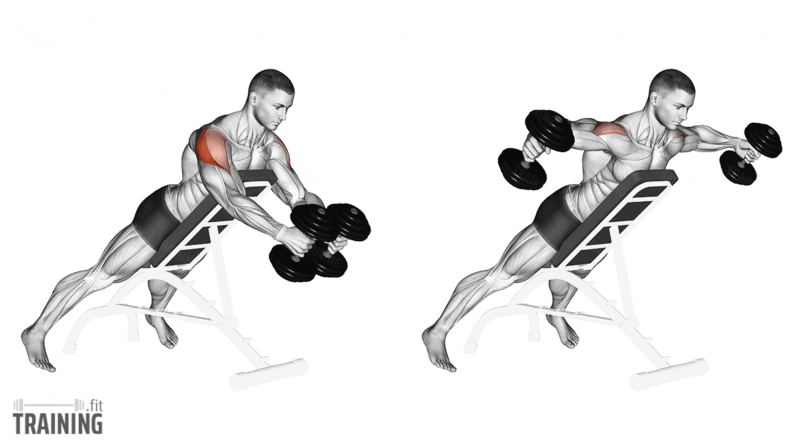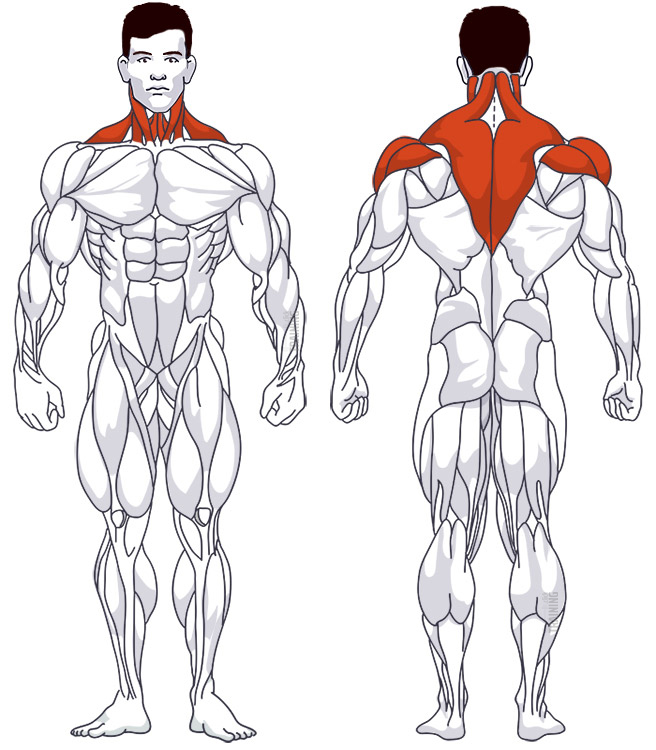Reverse Flys
Compound exercise, Free weightsOverview

Main muscles
- Neck: Trapezius muscle
(Musculus trapezius) - Shoulder: Posterior deltoid muscle
(Musculus deltoideus, posterior deltoid muscle)
Training plans
Reverse Flys is a suitable substitute for similar exercises in Shoulder training or as a supplement to various training plans.
Reverse Flys: Basics and alternatives

Involved main muscle groups:
Reverse Flys
Reverse Flys are the opposite of the chest exercise Flys. Instead of lying on your back, you lie on your stomach and extend your arms back. This exercise targets the back shoulder muscles and neck, making it a compound exercise.
Reverse Flys are a free-weight version of the Reverse Butterfly exercise, which is performed on a machine. The movement pattern is quite similar, though.
You can also do the exercise with a fitness band, making it even better for home workouts.
Correct Execution
There are different ways to perform Reverse Flys:
- Standing bent over
- Sitting bent over
- Lying on a flat bench
- Lying on an inclined bench
These variations don’t differ in the movement pattern if executed correctly. The angle between your torso and shoulders or arms should ideally remain the same. Choose the variant that feels most comfortable to you.
Below, we demonstrate the least error-prone variant – lying on an inclined bench.
Video tutorial
Step-by-Step Instructions
Set the incline bench to a relatively flat angle.
Hold a dumbbell in each hand and lie with your stomach on the backrest of the incline bench. Let your arms hang in front of the bench.
Slightly bend your elbows. You’re now in the starting position.
Lift both arms evenly and in a controlled manner to the side and back or up. Keep the angle in your elbows constant during the movement. Stop the movement before you need to noticeably pull your shoulder blades together to continue.
Hold the position for a brief moment. Slowly lower your arms to the side and bring the dumbbells together in front of your chest.
Common Mistakes
If you perform the exercise standing or sitting, make sure your back stays straight and you maintain a slight arch. Don’t hunch.
Also important: Try to keep your shoulder blades as stable as possible. If you need to noticeably pull your shoulder blades together to continue the upward movement, the muscle focus shifts from the shoulder to the back. Focus on your shoulder blades during the movement and stop the upward motion as soon as your shoulder blades need to move significantly.
And, of course, the classic tip applies here: Avoid using momentum. Perform the movement slowly and controlled without jerking the dumbbells up. This puts unnecessary stress on your shoulder joints and reduces muscle stimulation.